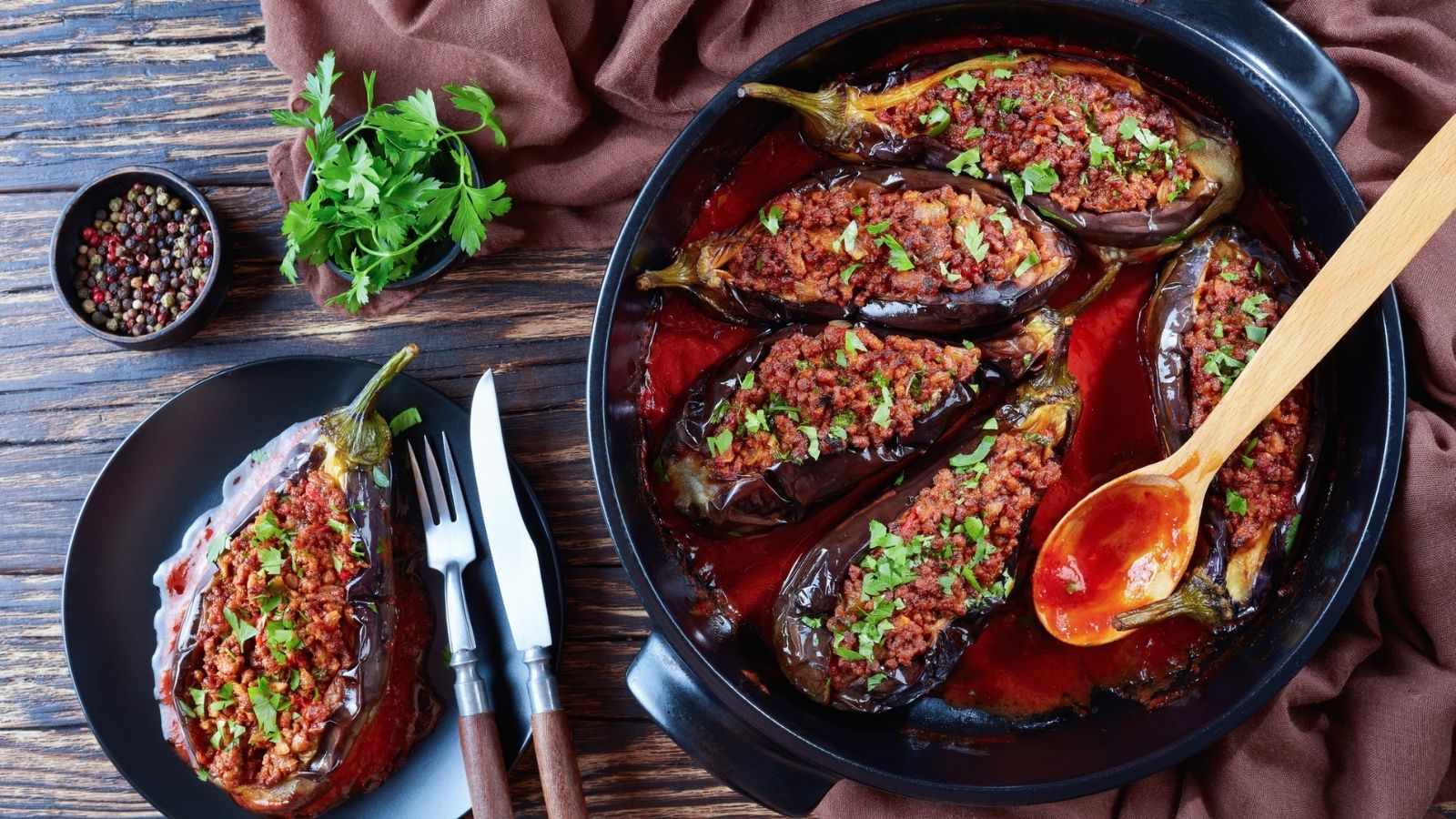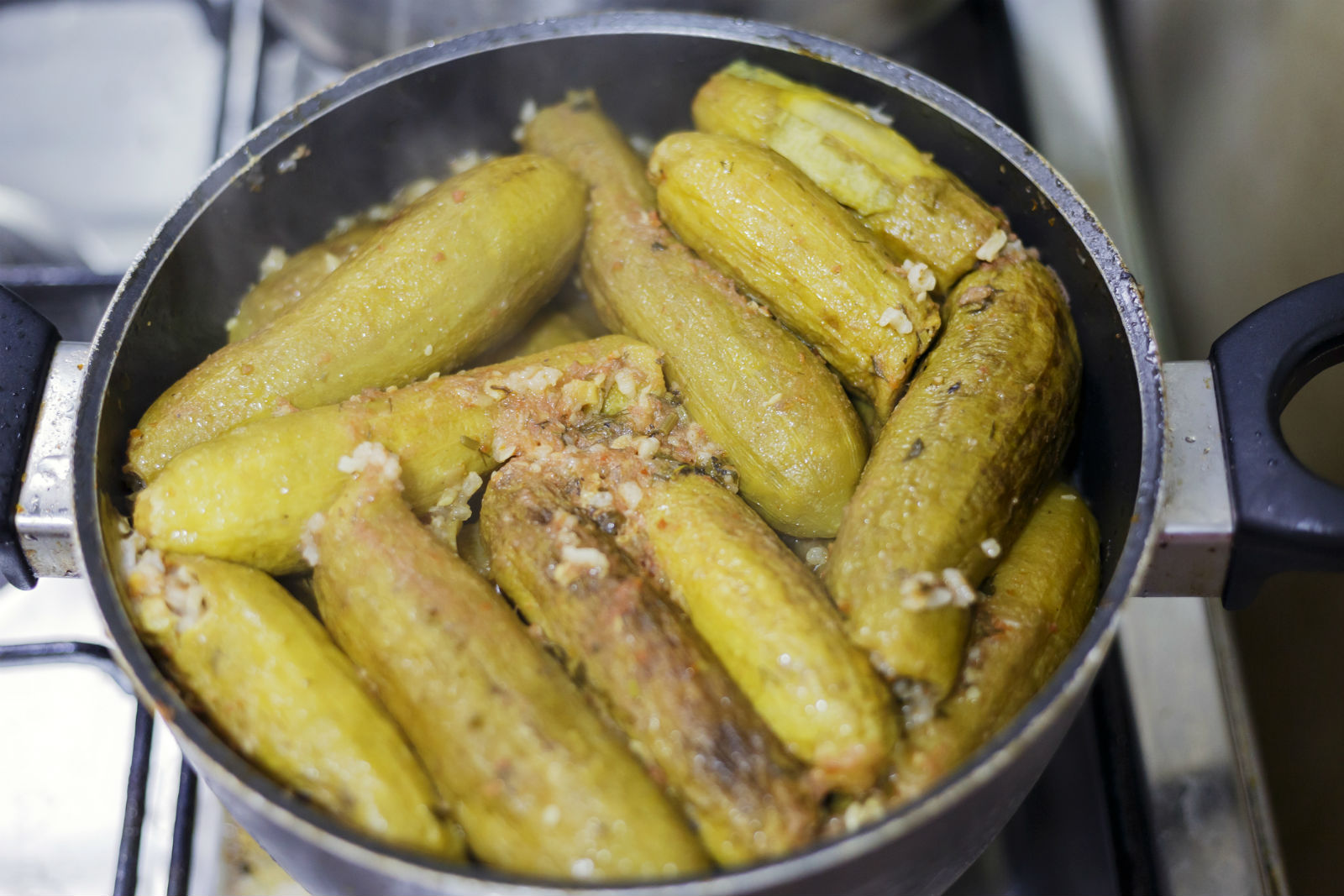For Jews of Polish or Hungarian descent, the festivals of Sukkot and Simchat Torah are synonymous with stuffed cabbage. Stuffed with rice (and very often ground beef), the cabbage rolls — said to resemble the Torah scrolls that are finished and begun again on Simchat Torah— are simmered in tomato-based sauce, which skews sweet or savory depending on the family’s origin.
When it comes to stuffed vegetables, this is the exception, not the norm.
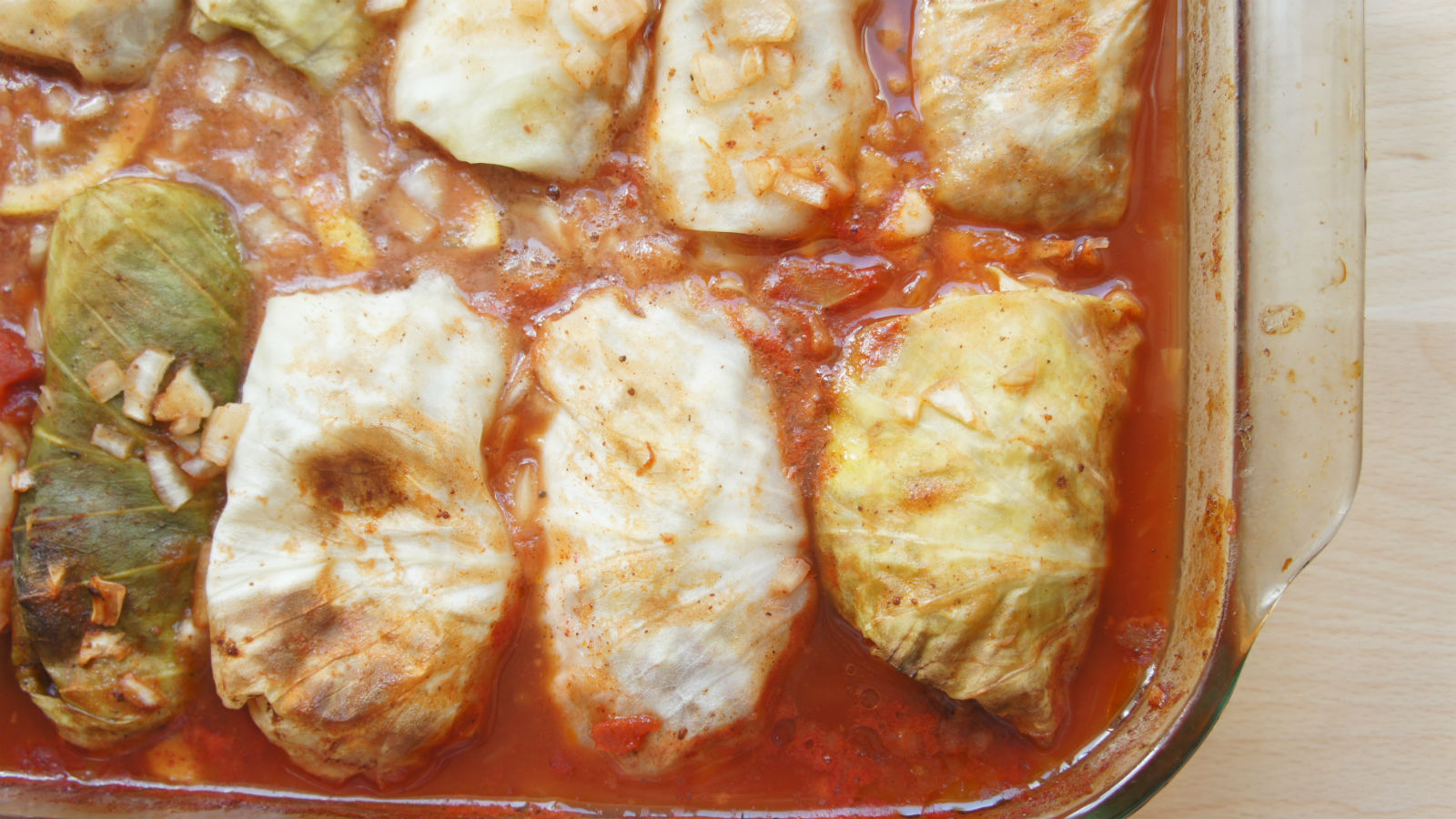
For centuries, most other Jewish communities have prepared and eaten a variety of stuffed vegetables year-round. Memulaim (the useful catch-all Hebrew term meaning “stuffed”) run the gamut from grape leaves to potatoes to artichoke bottoms.
The Nosher celebrates the traditions and recipes that have brought Jews together for centuries. Donate today to keep The Nosher's stories and recipes accessible to all.
The term “memulaim” is a modern one. Stuffed vegetables are also called rellenos or reynadas; mahshi or mehshi; dolmas or dolmadas — all mean “stuffed” or “filled” — depending on the cook’s background.
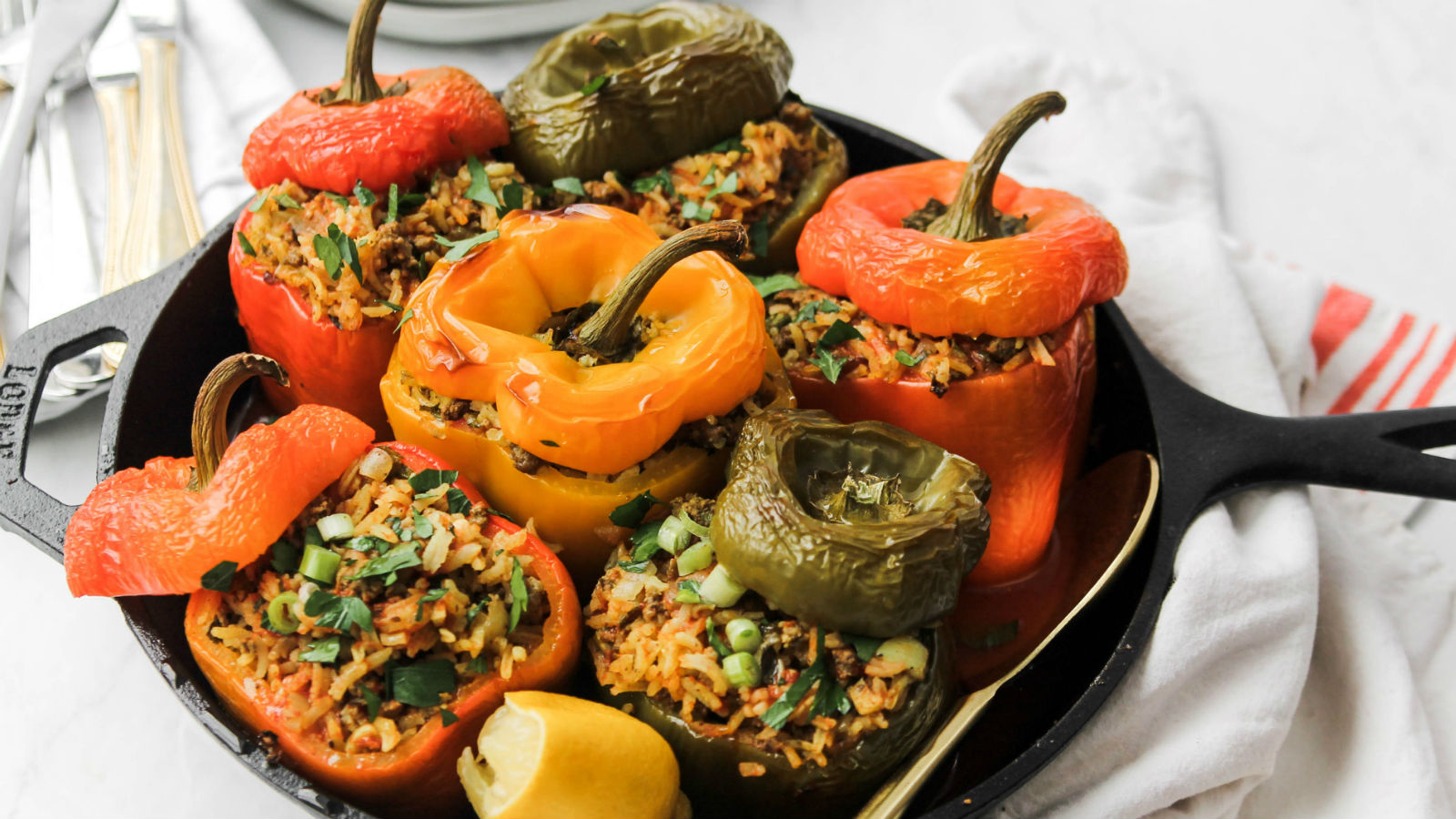
Whatever you call them, stuffed vegetables require time and skill. Leaves — like cabbage or grape leaves — must be blanched; cavities — like bell peppers’ — must be scooped out; other vegetables — like zucchinis — must be cored using an apple corer or similar longer-stemmed instrument. The fillings and sauces must be prepared, and the vegetables cooked. Traditionally, these preparations would be undertaken by groups of women over the course of an afternoon, and eaten on special occasions: Shabbat, festivals, and weddings.
Contradictorily, most memulaim originated as a thrifty means to stretch ingredients — like rice or ground meat — a little further. Nothing would go to waste; the scooped-out pulp of a stuffed tomato would be added to the sauce, Syrian communities use the leftover flesh of a stuffed zucchini in a separate dish — a crustless quiche called kousa b’jibn.
While most stuffed vegetable dishes are not specifically Jewish, they became especially popular with Jews because they could be prepared before Shabbat and eaten at room temperature.
Grape leaves, for instance — popular among Balkan, Middle Eastern, and North African Jewish communities — tended to be eaten warm when stuffed with seasoned rice and meat (typically ground beef or lamb) and cold when stuffed with only rice. Both varieties were simmered in a sauce — tomato or a mix of lemon and olive oil.
Note that these days, it is easy to find jars of brined grape leaves at Middle Eastern supermarkets if you can’t/don’t want to blanch your own fresh ones. It’s recommended to rinse the brined leaves before stuffing.
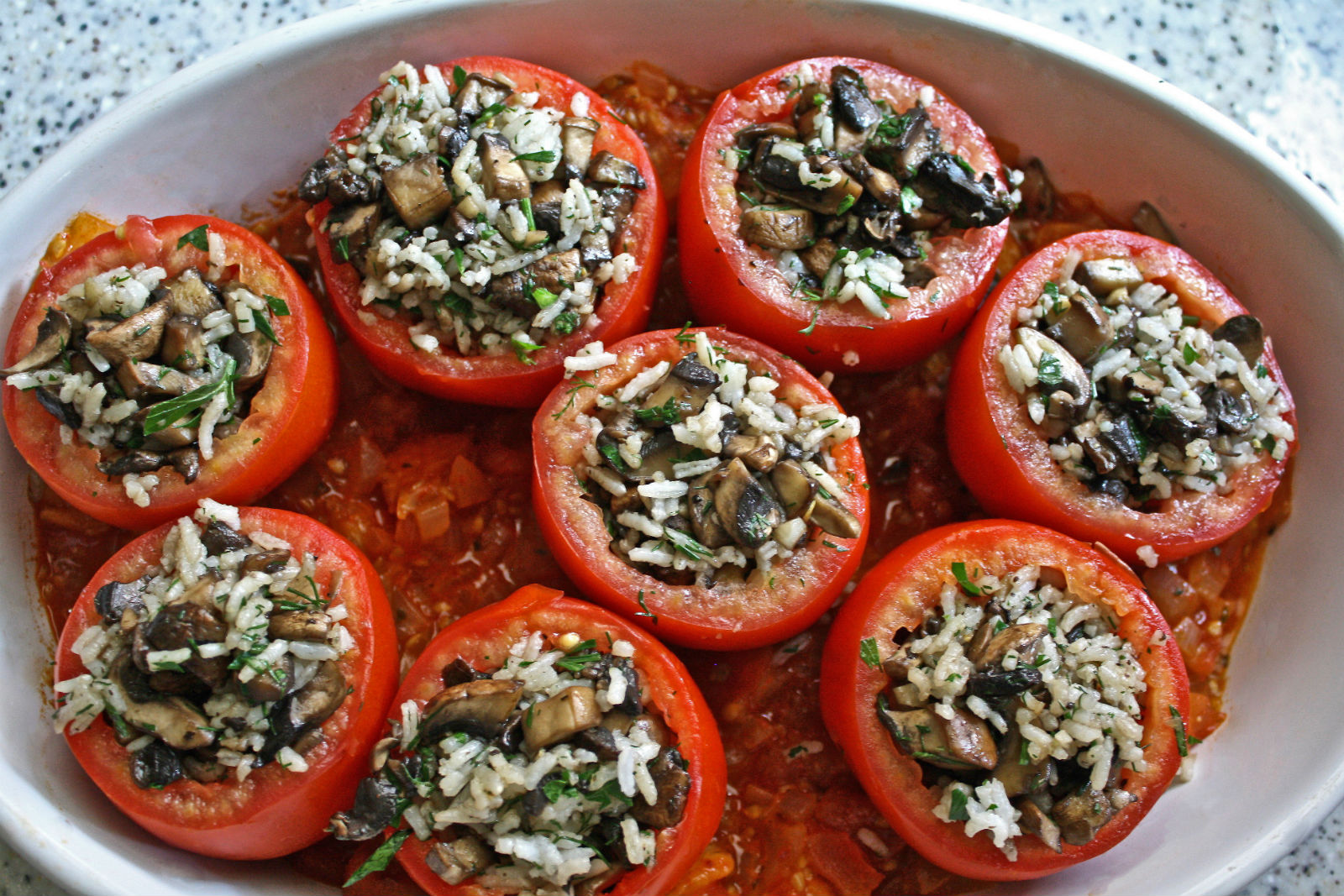
Despite many similarities, every Jewish community has their own spin on memulaim.
While both Egyptian and Moroccan Jews stuff artichoke bottoms with ground beef or lamb, it became a Passover dish for the latter, as the first artichokes of the year in Morocco coincided with the festival, and were eaten on seder night. Italian Jews stuff artichokes, too, though they also eat the hearts, and often fry the stuffed artichoke before simmering in a tomato sauce.
Balkan Jews deviate from the normal pareve or meat stuffing and often opt for dairy fillings (like cheese), instead. Syrian Jews often add pine nuts and raisins to their stuffings, and tamarind to their sauces for a sweet-tart flavor. Indian Jews flavor their fillings with turmeric and ginger, and stuff — among many other veggies — cucumbers! Bukharian Jews stuff whole pumpkins.
Jews of Libyan descent add another stage to their stuffed vegetable: after filling them with a spiced ground meat stuffing, they are dipped in flour then egg, fried, and then simmered in a tomato-based sauce. This dish is called mafrum and has become very popular in Israel, although the term has come to refer to only the potato variety. Within the Libyan community, however, eggplant and cauliflower (the latter reserved for special occassions) receive the same treatment.
The truth is, almost every vegetable has been stuffed by one Jewish community or another. Memulaim are such a diverse and rich Jewish culinary tradition that it would be a shame to limit yourself to only one vegetable or method.

